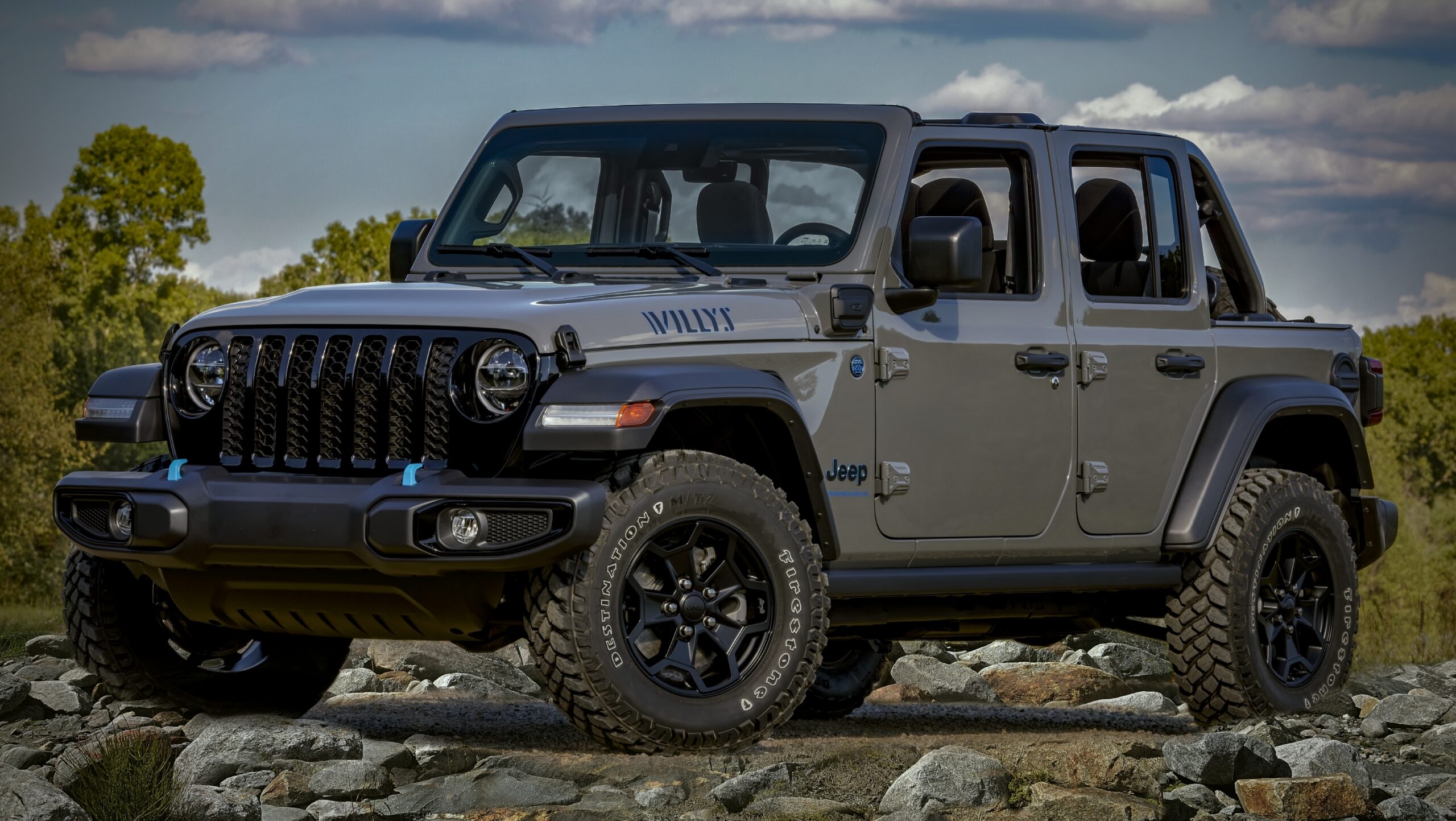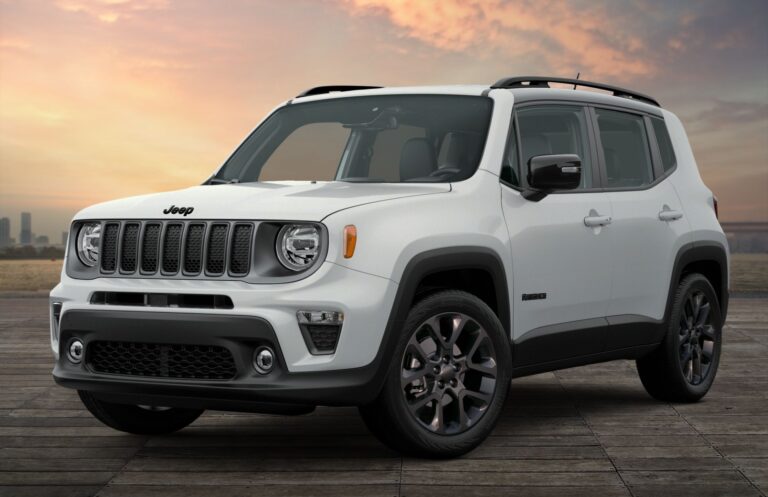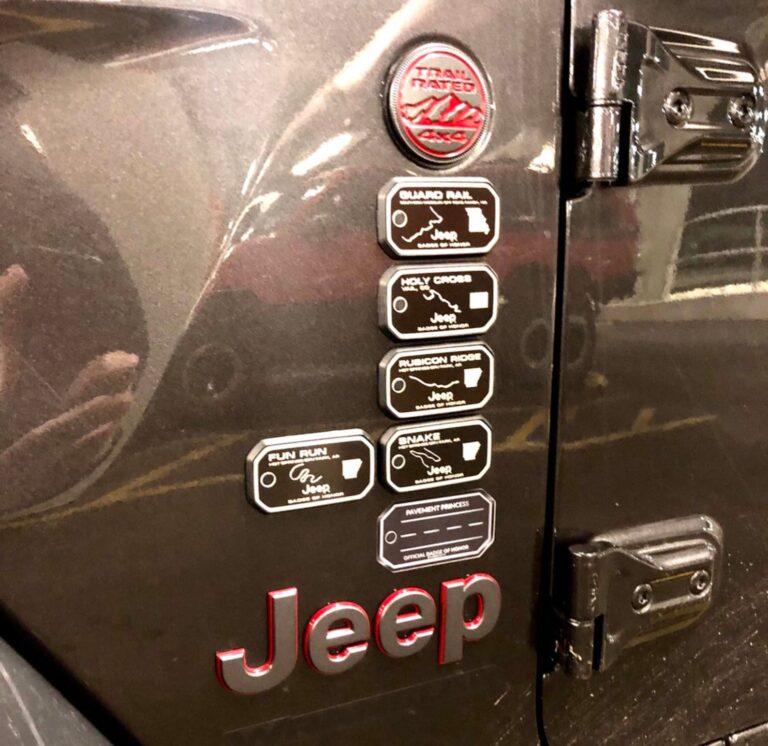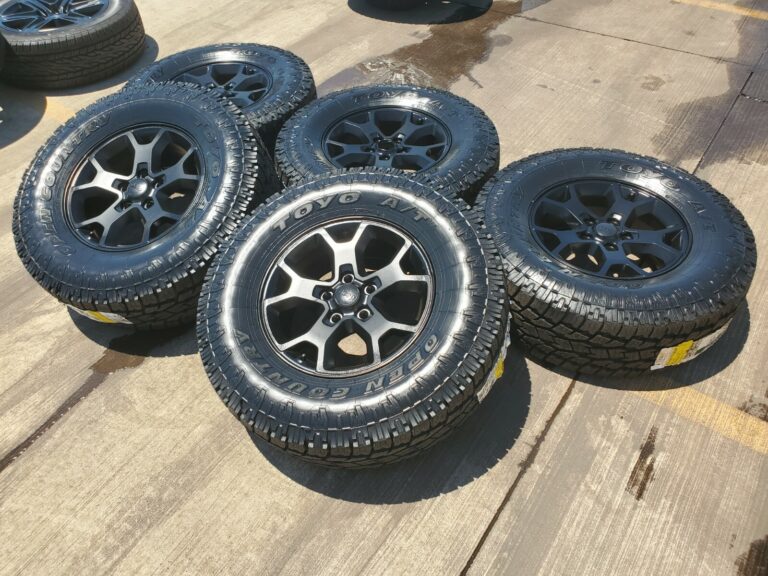Jeep YJ Axles For Sale: Your Ultimate Guide to Upgrading and Replacement
Jeep YJ Axles For Sale: Your Ultimate Guide to Upgrading and Replacement jeeps.truckstrend.com
The Jeep YJ Wrangler, produced from 1987 to 1995, holds a special place in the hearts of off-road enthusiasts. Known for its distinctive square headlights and rugged capability, the YJ remains a popular platform for customization and trail adventures. At the core of any serious off-road build, or even a simple restoration, are the axles. For many YJ owners, the quest for "Jeep YJ Axles For Sale" isn’t just about finding a replacement part; it’s about unlocking new levels of performance, durability, and conquering more challenging terrain.
This comprehensive guide will delve into everything you need to know about purchasing axles for your Jeep YJ. Whether you’re replacing a damaged unit, seeking an upgrade for larger tires, or building a rock-crawling monster, understanding the various options, considerations, and where to find them is crucial.
Jeep YJ Axles For Sale: Your Ultimate Guide to Upgrading and Replacement
Why Are Jeep YJ Axles So Important?
Axles are the backbone of your Jeep’s drivetrain, connecting the differential to the wheels and transmitting power from the engine to the ground. They bear the brunt of off-road abuse, supporting the vehicle’s weight and enduring the torsional stresses of aggressive driving. For YJ owners, the stock axles – typically a Dana 30 in the front and a Dana 35 in the rear (with some rare Dana 44 rears in specific models) – often become a limiting factor as enthusiasts pursue larger tires, more demanding trails, or simply encounter the wear and tear of decades of use.
Upgrading or replacing your YJ’s axles offers several key benefits:
- Increased Strength and Durability: Aftermarket or heavy-duty swap axles can handle larger tires and more extreme off-road conditions without bending, breaking, or shearing components.
- Improved Performance: Stronger axles allow for the installation of lower gear ratios, enhancing crawling ability and power delivery. They also provide a robust platform for lockers, improving traction.
- Wider Stance: Some aftermarket axles offer a wider track width, improving stability on uneven terrain and preventing rollovers.
- Customization Potential: A solid axle foundation opens up possibilities for custom suspension setups, bigger brakes, and more.
- Repair and Restoration: For many, finding a good used axle is essential to repair a damaged stock unit and get their beloved YJ back on the road or trail.

Understanding Stock YJ Axles and Their Limitations
Before diving into replacements, it’s vital to understand what your YJ came with and why upgrades are often sought:
- Front Axle: Dana 30: A common light-duty front axle found in many Jeeps. It’s generally sufficient for stock tire sizes (up to 31-32 inches) and mild off-roading. However, with larger tires (33+ inches), aggressive driving, or lockers, the Dana 30’s weak points (thin tubes, small U-joints, and limited differential strength) become apparent.
- Rear Axle: Dana 35 (C-clip): This is the more problematic of the two stock axles. The Dana 35 is notoriously weak, especially the C-clip design which retains the axle shafts. It’s prone to bending axle tubes, breaking shafts, and differential failures with anything beyond moderate off-road use or tires larger than 31 inches.
- Rear Axle: Dana 44 (Rare): A small percentage of YJs (primarily the Renegade package and some earlier models) came with a non-C-clip Dana 44 rear axle. This is a significant upgrade over the Dana 35 and highly sought after by enthusiasts.

The primary limitation of the stock axles is their inherent strength. As YJ owners inevitably put larger tires on their rigs (33-inch, 35-inch, or even larger), the increased leverage and rotational mass put immense strain on the factory components, leading to breakages.

Popular Aftermarket and Swap Axle Options for Your YJ
When searching for "Jeep YJ Axles For Sale," you’ll encounter a variety of options, from beefed-up versions of stock axles to complete heavy-duty swaps from other vehicles.
- Dana 44 (D44) – Front & Rear:
- Source: Found in various Jeeps (XJ Cherokee, TJ Wrangler, JK Wrangler – though JK axles require significant modification for a YJ), Ford F-150s, International Scouts, and some Wagoneers.
- Pros: Significantly stronger than a D30/D35, good balance of strength and weight, wide availability of aftermarket parts (lockers, gears, shafts).
- Cons: Still has limitations for extreme abuse with very large tires (37+ inches), finding a YJ-specific width D44 front is challenging. Swapping D44s from other vehicles often requires new mounting brackets and sometimes shortening.
- Ford 8.8 Inch (Rear):
- Source: Ford Explorers (1995-2001 are popular due to disc brakes and desirable gear ratios).
- Pros: Very strong for its size and weight, readily available, inexpensive, comes with disc brakes, good aftermarket support. Often considered one of the best bang-for-your-buck rear axle swaps.
- Cons: Requires welding new YJ mounting brackets, bolt pattern needs to be converted or wheel adapters used to match the YJ’s 5×4.5" pattern.
- Chrysler 8.25 Inch (Rear):
- Source: Jeep Cherokee XJ.
- Pros: Stronger than a Dana 35, good alternative if a Ford 8.8 isn’t available, bolts in (though some minor modifications might be needed depending on year).
- Cons: Not as strong as a Dana 44 or Ford 8.8, still uses C-clips in earlier versions (though later 29-spline versions are quite robust).
- Dana 60 (D60) – Front & Rear:
- Source: Heavy-duty trucks (Ford, Chevy, Dodge).
- Pros: The ultimate in strength and durability for most recreational off-roaders. Can handle massive tires (40+ inches) and extreme abuse.
- Cons: Very heavy, expensive, requires significant fabrication for mounting, often comes with an 8-lug bolt pattern requiring new wheels or adapters, often too wide for a standard YJ wheelbase without fender modifications. Generally overkill for anything less than 37-inch tires.
- Custom Fabricated Axles:
- Source: Specialty off-road shops.
- Pros: Built to your exact specifications (width, strength, gear ratio, lockers, mounting).
- Cons: Most expensive option, long lead times.
Key Considerations When Buying Jeep YJ Axles For Sale
Navigating the market for used or new axles requires careful thought. Here’s what to keep in mind:
- Condition: Used, Rebuilt, or New?
- Used: Most common and affordable. Requires thorough inspection for bent tubes, worn gears, damaged housings, and leaks. You’re buying someone else’s problem or a great deal.
- Rebuilt: Often sold by shops, these have been disassembled, inspected, and worn components replaced (bearings, seals, sometimes gears). A good middle ground for reliability.
- New/Custom: Brand new axle housings or complete assemblies. Most expensive but offer peace of mind and specific configurations.
- Gear Ratio: Crucial! Your front and rear axles must have the same gear ratio to avoid drivetrain binding and damage. If you’re only replacing one axle, ensure it matches your existing one. If replacing both, consider what tire size you plan to run to select an optimal ratio (e.g., 4.10, 4.56, 4.88, 5.13).
- Axle Width: YJ stock width is roughly 60 inches WMS (Wheel Mounting Surface) to WMS. Swapping axles from other vehicles often results in wider axles, which can be beneficial for stability but may require fender flares or custom fenders to stay legal and prevent tire rub.
- Bolt Pattern: YJ’s have a 5×4.5" bolt pattern. Many swap axles (e.g., Ford 8.8, D44 from some sources) will have different patterns (e.g., 5×5.5", 6-lug, 8-lug). You’ll need to either use wheel adapters, re-drill axle flanges, or purchase new wheels.
- Lockers/Limited Slip Differentials (LSDs): Some used axles might come with these installed, which is a bonus. Factor their value into the price. If not, consider if you want to add one later.
- Mounting Brackets: This is a big one for swap axles. Unless you’re buying a YJ-specific aftermarket axle, you will almost certainly need to cut off the donor vehicle’s brackets and weld on new YJ spring perches, shock mounts, track bar mounts, and control arm mounts. Ensure you or your fabricator have the skills for this.
- Brake System: Donor axles may come with drum or disc brakes. Consider if you want to upgrade your YJ to rear disc brakes if the donor axle has them.
- Shipping Costs: Axles are heavy and bulky. Shipping can be expensive. Factor this into your budget if buying online from a distant seller.
Where to Find Jeep YJ Axles For Sale
The hunt for axles can be a treasure hunt!
- Online Marketplaces:
- Craigslist/Facebook Marketplace: Excellent for local finds, allowing you to inspect the axle in person. Be wary of scams and always meet in a public place.
- eBay: Wider selection, but shipping can be a major factor. Look for reputable sellers with good feedback.
- Dedicated Jeep Forums/Groups (e.g., Pirate4x4, JeepForum, YJ-specific Facebook Groups): Often the best place to find well-maintained or already modified axles from fellow enthusiasts. Members are generally knowledgeable and honest.
- Salvage Yards/Junkyards: A great source for raw donor axles (Ford 8.8s, Dana 44s). Prices are usually low, but condition is a gamble. Be prepared to pull the axle yourself.
- Specialty Off-Road Shops: Many shops build or stock used/rebuilt axles specifically for popular Jeep swaps. This is often the most reliable but also the most expensive option. They might also offer installation services.
- Word of Mouth: Let your local Jeep club or off-road friends know what you’re looking for. You might be surprised what’s sitting in someone’s garage.
Inspecting an Axle Before Purchase
Before handing over your cash, perform a thorough inspection:
- Visual Inspection: Look for severe rust, cracks in the housing, bent tubes (sight down the tube from end to end), and impact damage to the differential cover or housing.
- Fluid Leaks: Check around the pinion seal, differential cover, and axle seals for any signs of leaks.
- Pinion Play: Grab the pinion yoke and try to wiggle it up/down and side-to-side. Excessive play indicates worn pinion bearings.
- Axle Shaft Play: Try to push/pull the axle shafts in and out. Excessive play could indicate worn C-clips (if applicable) or worn bearings.
- Spin the Gears (if possible): If the axle is out of the vehicle, try to spin the input yoke and feel for smooth rotation. Listen for grinding or clunking sounds.
- Spline Condition: If shafts are visible, check the splines for twisting or wear.
- Brake Components: If disc brakes are present, check rotor thickness and caliper condition. For drums, inspect the backing plate.
- Mounting Brackets: If it’s a swap axle, note if the donor brackets are still attached and will need to be removed. If it’s a YJ-specific axle, ensure all necessary brackets are present and in good condition.
Installation Considerations
While buying the axle is one step, installing it is another.
- DIY vs. Professional: Swapping axles, especially those requiring welding, is a significant undertaking. If you lack welding skills, proper tools, or experience with drivetrain work, it’s highly recommended to seek professional installation.
- Welding: Most swap axles require welding new spring perches, shock mounts, and control arm mounts. Proper welding techniques are critical for safety and durability.
- Gearing: If you change your gear ratio, you’ll need to re-gear both front and rear axles. This is a precise job that often requires specialized tools and expertise to set the backlash and preload correctly.
- Driveshafts: A different axle may require different length driveshafts or different U-joint sizes.
- Brakes: Ensure your brake lines, master cylinder, and proportioning valve are compatible with your new axle’s brake system.
Potential Challenges and Solutions
- Finding the "Perfect" Axle: It rarely exists. Be prepared to compromise on some aspects or factor in additional costs for modifications.
- Incorrect Gearing: If you buy a used axle with the wrong gear ratio, you’ll need to re-gear it, adding significant cost. Always confirm ratios before buying.
- Hidden Damage: Used axles can hide issues. Thorough inspection minimizes risk, but sometimes problems only surface after installation. A reputable seller or shop offers better recourse.
- Shipping Logistics: Use freight companies for heavy items. Get quotes upfront. Consider picking up locally to save money and inspect the axle.
Estimated Price Table for Jeep YJ Axles For Sale
Prices for used axles vary wildly based on condition, location, included components (gears, lockers, brakes), and current market demand. This table provides estimated ranges for common options. Always verify specific details with the seller.
| Axle Type (Front/Rear) | Common Donor Vehicle/Source | Typical Condition | Estimated Price Range (USD) | Key Considerations / What to Expect |
|---|---|---|---|---|
| Dana 30 (Front) | Jeep YJ, XJ, TJ | Used (Stock) | $150 – $400 | Basic replacement. May need new ball joints, bearings, seals. |
| Dana 35 (Rear) | Jeep YJ, XJ, TJ | Used (Stock) | $100 – $300 | Basic replacement. Often considered a temporary solution. |
| Dana 44 (Rear) | Jeep YJ (Rare), TJ, XJ, Ford F-150 | Used (Stock) | $400 – $1,000 | YJ D44 is highly sought after. Other D44s require fabrication. |
| Ford 8.8 (Rear) | Ford Explorer (95-01) | Used (Stock) | $200 – $600 | Excellent strength-to-cost ratio. Requires welding brackets & bolt pattern change. |
| Chrysler 8.25 (Rear) | Jeep XJ Cherokee | Used (Stock) | $150 – $450 | Stronger than D35. Later 29-spline versions preferred. |
| Dana 44 (Front) | Wagoneer, J-truck, Some K-series | Used (Stock) | $500 – $1,500 | Popular swap, but often wider than YJ. Requires welding brackets. |
| Dana 60 (Front/Rear) | Heavy-Duty Trucks | Used (Stock) | $800 – $2,500+ | Extreme duty. Very heavy, expensive, significant fabrication required. |
| "Pre-Built" Swap Axles | Specialty Off-Road Shops | Rebuilt/Custom | $2,000 – $5,000+ per axle | Often include new gears, lockers, brackets, shafts. Bolt-in ready. |
Note: Prices do not include shipping, installation, or additional components like new brakes, driveshafts, or re-gearing if necessary.
Frequently Asked Questions (FAQ)
Q: Do I need to re-gear my axles if I swap them?
A: Yes, if the new axles have a different gear ratio than your existing ones, or if you’re installing larger tires, you will need to re-gear both front and rear axles to match. Failing to do so will cause severe drivetrain damage.
Q: What’s the best axle for 35-inch tires on a YJ?
A: For 35-inch tires and moderate to aggressive off-roading, a Dana 44 front and a Ford 8.8 or Dana 44 rear are excellent choices. A beefed-up Dana 30 front can sometimes hold up if sleeved and gusseted, but a D44 is significantly stronger.
Q: Can I run a Dana 30 front and a Ford 8.8 rear?
A: Yes, this is a very common and cost-effective swap combination for YJs. You just need to ensure both axles have the same gear ratio.
Q: What’s the difference between a C-clip and non-C-clip axle?
A: A C-clip axle uses a small C-shaped clip inside the differential to hold the axle shaft in place. If an axle shaft breaks, the wheel can potentially come off. A non-C-clip axle retains the shaft using a bearing pressed onto the shaft and bolted to the axle tube flange, making it safer if a shaft breaks. The stock YJ Dana 35 is a C-clip design.
Q: How much does it cost to install swap axles?
A: Installation costs vary widely based on your location and the complexity of the swap. If you’re paying a shop for a full weld-in swap, expect anywhere from $1,000 to $3,000+ for labor alone, not including parts like driveshafts, brake lines, or re-gearing.
Q: Should I buy a complete axle or just the housing?
A: A complete axle (with shafts, differential, brakes) is usually more convenient. However, if you plan to install new gears, a locker, or heavy-duty shafts anyway, sometimes just a bare housing is a cheaper starting point.
Q: Will a wider axle affect my YJ’s handling?
A: Yes, a wider stance generally improves stability, especially on off-camber situations. However, it can also lead to tires rubbing fender flares during turns or suspension compression, requiring fender modifications.
Conclusion
The search for "Jeep YJ Axles For Sale" is more than a simple transaction; it’s a gateway to enhancing your Jeep’s capabilities and longevity. By understanding the strengths and weaknesses of stock axles, exploring the vast array of aftermarket and swap options, and carefully considering factors like condition, gear ratio, and installation requirements, you can make an informed decision that perfectly suits your budget and off-roading ambitions. Whether you’re mending a broken axle or building a trail-conquering machine, the right set of axles will ensure your classic YJ continues to deliver adventure for years to come. Do your research, inspect thoroughly, and enjoy the journey of transforming your Jeep into the ultimate off-road companion.





